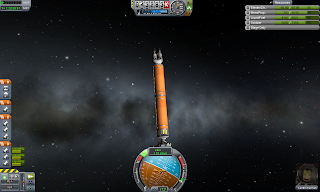As I was waking up this morning, I was dreaming of breakfast.
Not an ordinary breakfast, but one more suitable for snoozable cloud-thoughts. I was lucky enough to catch the puffy dreamstuff in the process of returning from blessed nocturnal oblivion, and somehow hold on to it.
I watched it unfold as a rose in spring, and saw it took the shape of an egg.
Eggs are poetic in many ways, but in this instance, the egg consisted of exactly two things:
Neatly separated, they are dramatically different ingredients. How peculiar they spring from the same shell!
I've been into yolks recently. Ice-cream, mayonnaise, custard, "carbonara" sauce, the yolk is what provides that thick lascivious creaminess that makes these foods so irresistible.
The albumen is very tame by comparison: practically flavorless, entirely colorless when raw, a ghastly white when cooked. Fat-free and lacking any physical or chemical affinity for "bad" food, it's the polar opposite of its shell-mate, the yolk. Except, that's not entirely true. When whipped thoroughly, it becomes a most enticing foam.
In my dream, the yolk was gently whisked into a bowl of fine sugar . In a pot on the stove, cream and sugar and pure Bourbon vanilla seeds were simmering. This was poured in a thin stream from a great height into the bowl with the now fully mixed sweet yolk, gently tempering the sensitive proteins. The liquid was returned to the stpvetop, and under constant stirring, its temperature was raised to 87C, at which point it had become a thick custard and poured into a ramekin.
The ramekin as placed in a snowbank to chill. Pure, white snow. White as clouds, or, as it happens, whipped egg whites.
The tongue abhors flavor vacuum, so in this waking dream, the egg whites were whipped with sugar and cinnamon, almost to the point at which the egg starts releasing moisture and losing volume. The foam will be stiff and shiny, and of exquisite color.
The whites (now orange) were gently spread on top of the cold custard in the ramekin, which was placed into an eagerly waiting oven.
An undefined span of time later, the ramekin emerged from the metal belly of the kitchen, with a perfectly crunchy cinnamon meringue on top of a delightfully smooth vanilla custard. One egg, two desserts, recombined.
At this point, I was awake enough to realize I was deceiving myself. Meringues need a long time (an hour, say) at a relatively low temperature (around 150C), and there's no way the ramekin and foam would insulate the custard sufficiently to keep it from cooking completely. On the other hand, perhaps that wouldn't be a disaster? Still, determining when the meringue would be finished would be a challenge in itself, sitting on a moist base! Other practical matters are easier to solve: a single yolk is too little to effectively cook into a custard, and a single egg white too meager to whip into a meringue; four or more servings at once would be easy to accomplish, divided into four little ramekins, although the process would lose a degree of its poetry.
In any case, I'll be trying out this recipe at some point. All I have to do is conceive of an occasion special enough for a sugar-fat-frenzy, but not so special that mucking it up with a burnt-egg-fiasco would cause domestic difficulties!






































